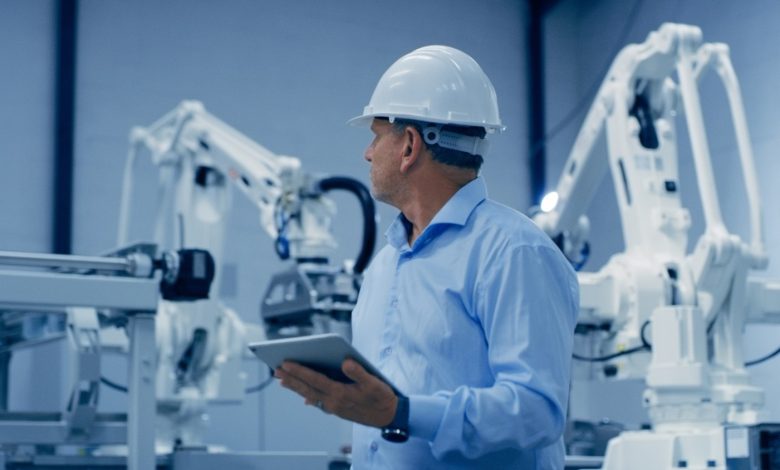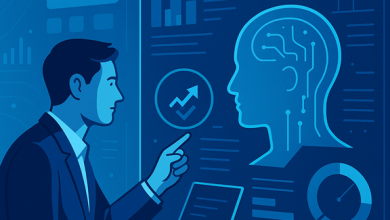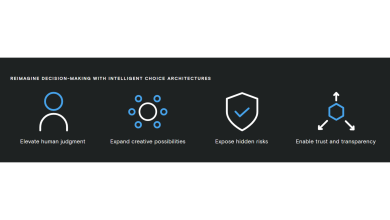
On factory floors, autonomous mobile robots move through unpredictable layouts. In warehouses, self-driving forklifts navigate cluttered aisles with remarkable precision. On assembly lines, collaborative robots handle repetitive tasks, working side by side with human operators.
These are just a few of the ways intelligent machines are redefining production. Together, these systems are turning smart factories into dynamic environments where machines think and evolve alongside shifting production needs.
But compared to text-based AI models like ChatGPT, physical AI sets a far higher bar. It must sense, analyze, and act in real time with uncompromising safety and precision. In this environment, even small mistakes can have serious consequences.
Achieving that standard hinges on the resilience of an organization’s technical infrastructure. Without a solid data foundation and edge intelligence, robotic systems risk more than wasted investment. They endanger worker safety.
Why physical AI demands more
At its core, physical AI combines perception with motion. These technologies encode environmental understanding so systems can execute tasks in real time and in a changing environment.
This differs fundamentally from traditional AI focused on text, images, or pattern analysis. While those systems excel at analyzing, predicting, and classifying information, they rarely interact with the physical world.
By contrast, physical AI actively perceives its surroundings, self-correcting on the fly and making autonomous decisions in the real world. For instance, an advanced factory robot doesn’t just flag a defect; it automatically adjusts actions on the spot and coordinates with other machines to keep production flowing.
At the center of this shift is AI/OT convergence, which integrates intelligence systems with sensors, controllers, robotic arms, and other control systems. This convergence creates a continuous feedback loop of sensing, decision-making, and execution that allows physical AI systems to perform far beyond earlier automation tools in diverse and unstructured factory roles.
Making this work requires tight integration across data, models, and machines. But many manufacturers struggle on this front. In fact, 98% of manufacturers are struggling with at least one data issue within their organization that’s delaying or preventing them from using AI, automation, and other advanced technologies.
Often, legacy OT systems are unable to connect to modern AI modules. Latency in decision pipelines introduces hesitation or error. And when networks lag or compute nodes fail, real-time control can break down.
Without these capabilities, robotics systems can exacerbate physical hazards on factory floors and manufacturing lines. In fact, a recent study of OSHA Severe Injury Reports recorded 77 robot-related accidents between 2015 and 2022.
As adoption accelerates and more robots are introduced into production lines, organizations need technical infrastructure that enables faster responses, more accurate outcomes, and safer interactions between humans and machines.
The foundation for smarter, safer factories
Edge intelligence is emerging as a crucial solution for enabling tight coordination and driving safer, smarter factory operations.
By processing data directly at the source — on robots, controllers, or sensors — edge systems enable ultra-low latency responses and real-time decision-making. The ability to respond instantly is essential in unpredictable and constantly changing factory environments.
A machine tightening a screw to within 0.03 mm tolerance cannot afford to wait on a distant server for instructions. An autonomous system monitoring oil levels or unusual equipment noise must respond instantly to prevent costly downtime. And when a robot detects a fire or another potential hazard, edge intelligence enables it to reroute, stop, or coordinate emergency protocols immediately.
Here are several practical steps manufacturing leaders can take to ensure their operations are prepared to harness edge capabilities and unleash the full potential of physical AI.
1. Lay a strong data foundation
Physical AI systems rely on billions of real-world data points for training. If an organization’s data foundation is weak, decisions made by intelligent machines will be unreliable and ineffective. In many cases, poor quality or incomplete data introduces errors that can ripple through entire production lines.
Avoid the temptation to rush directly into robotics projects. Instead, start by assessing existing IT and OT infrastructure and ensuring a robust data collection system. By investing early in structured, high-quality data, you’ll save time and avoid costly recalibrations later.
2. Integrate intelligence incrementally
Small technical wins, such as upgrading sensors or deploying localized robot intelligence, help prove value and mitigate risk. Over-centralization, on the other hand, can slow responses and jeopardize safety in fast-moving environments.
The best approach is to integrate AI into physical systems gradually, starting with edge devices that deliver immediate impact. Balancing decentralized intelligence with broader system integration ensures both responsiveness and safety.
3. Empower people alongside technology
Workers remain central to every technological transformation, especially in smart factories where humans and robots operate side by side. As robots take on repetitive or hazardous tasks, employees must shift toward system optimization, strategic oversight, and ensuring workplace safety.
Invest in training that builds AI literacy, sharpens robot oversight, and strengthens collaboration skills. Preparing employees for new responsibilities not only eases the transition and enhances safety, but also fosters trust in robotics as a partner in production rather than a threat.
4. Design with future growth in mind
Physical AI systems should be designed with scalability and self-evolution in mind. Start with pilot projects in controlled areas, e.g., a single production line, to test integration and collect data. These early efforts create a foundation for expanding into a fully connected, self-improving factory.
A siloed approach, where units fail to share data or collaborate, often leads to stalled projects and limited returns. Instead, emphasize integration and data sharing across the enterprise. Each improvement should contribute to a broader learning ecosystem that strengthens over time.
Taking a scalable approach opens the door to what many leading manufacturers are working toward: a “factory super brain.” — a centralized yet adaptive system coordinates robots, sensors, and machines into a living network of intelligence that powers everything from power defect detection to predictive maintenance and production optimization.
Powered by billions of data points, the factory super brain unites digital algorithms with physical OT systems — from high-precision 3D cameras to robotics — to link every workstation. As a closed-loop learning system, it constantly feeds operational insights back into decision-making, creating a factory that self-adjusts and continually improves.
Preparing for the next era of manufacturing
Physical AI is creating a new paradigm for how smart factories operate. It opens the door to safer, faster, and more adaptable production environments where robots and humans work together to continually improve operations.
Realizing that vision requires strong fundamentals: reliable data, resilient infrastructure, and edge intelligence capable of split-second, human-machine collaboration.
And the manufacturers that establish those systems and safeguards today will set the pace in tomorrow’s industrial landscape.



